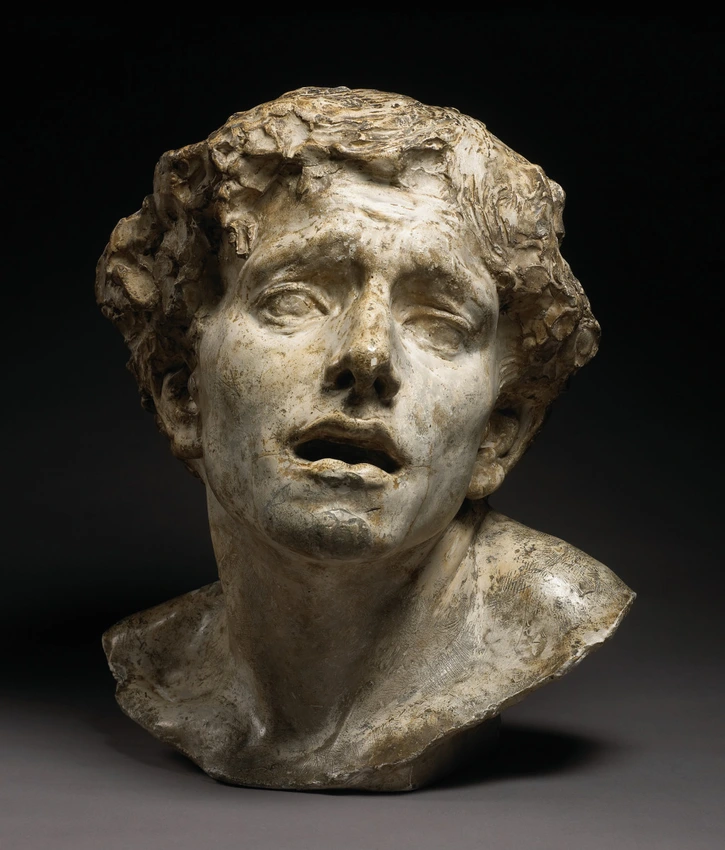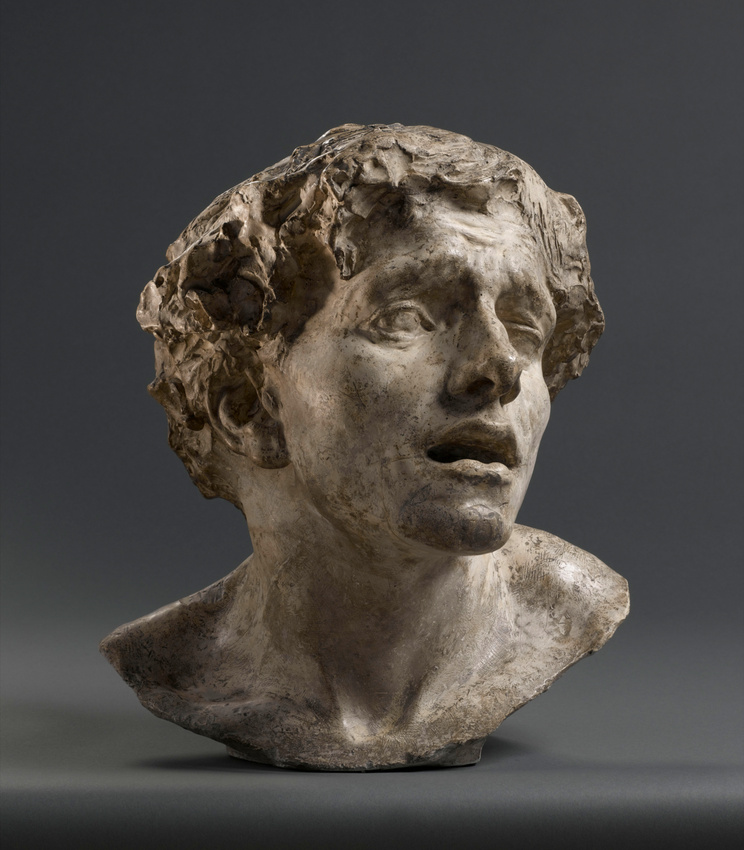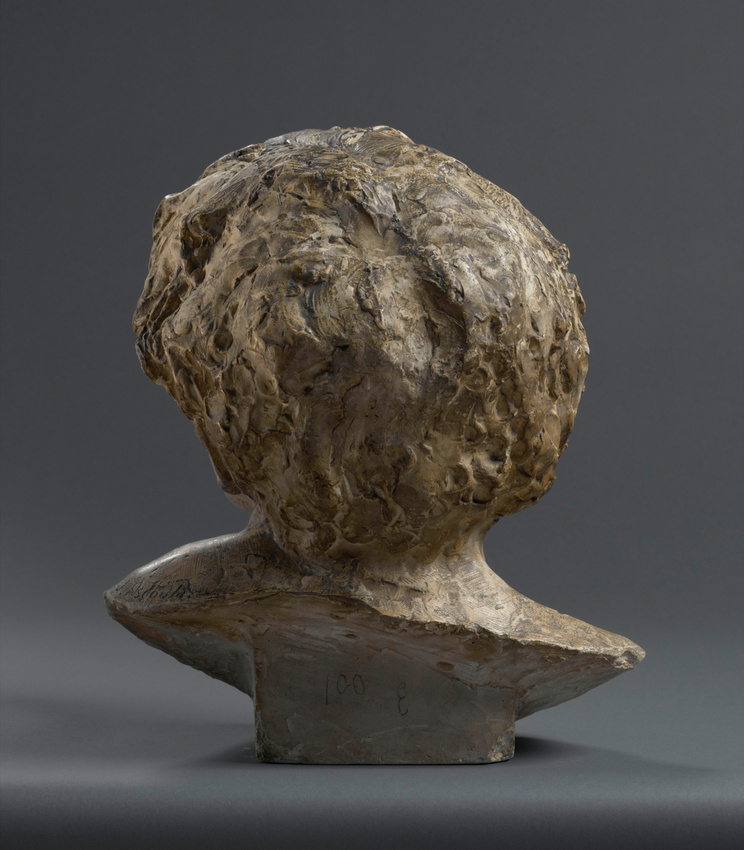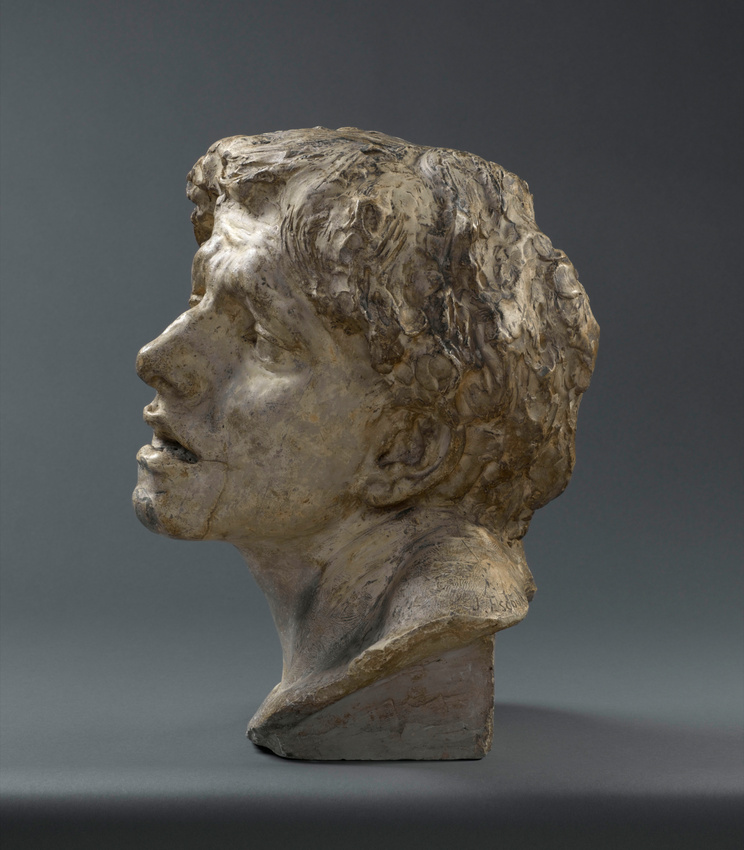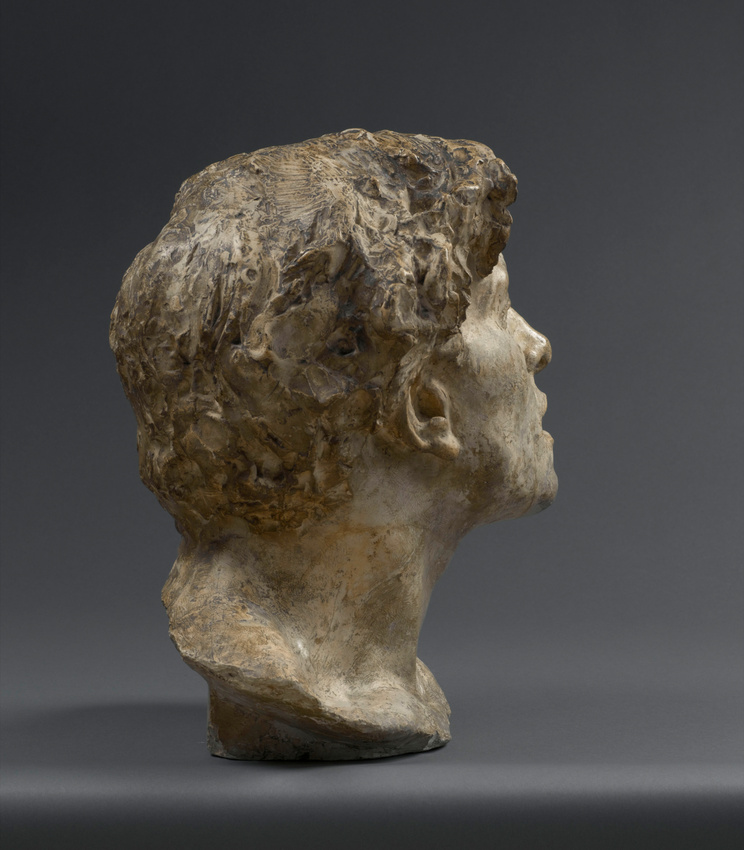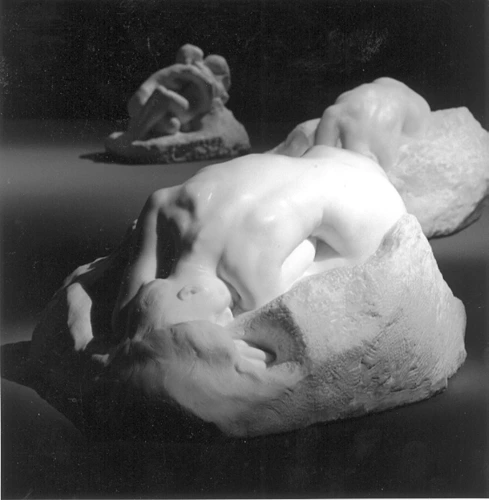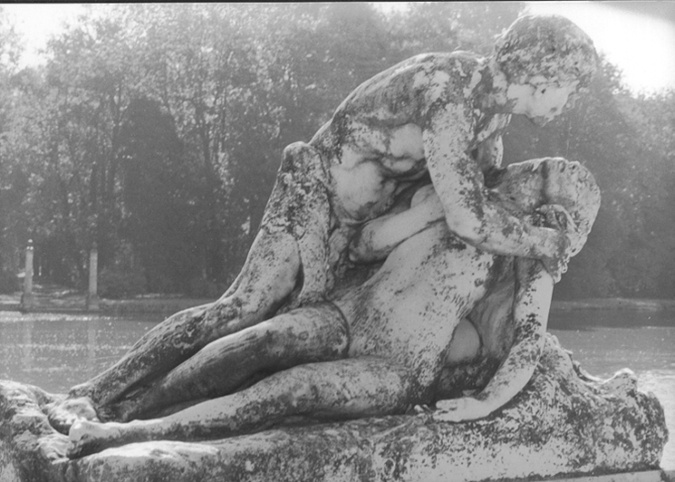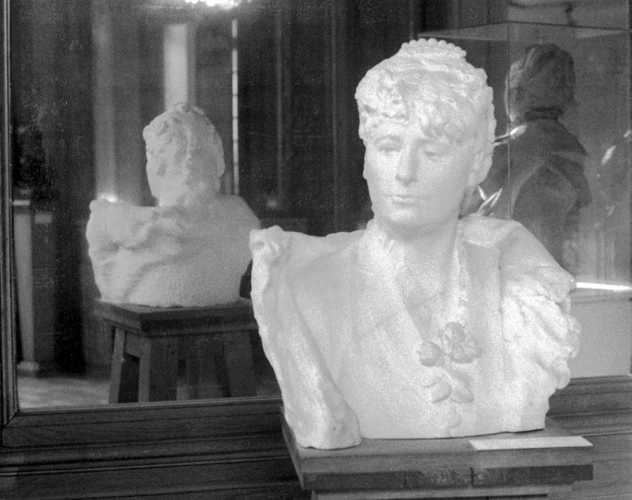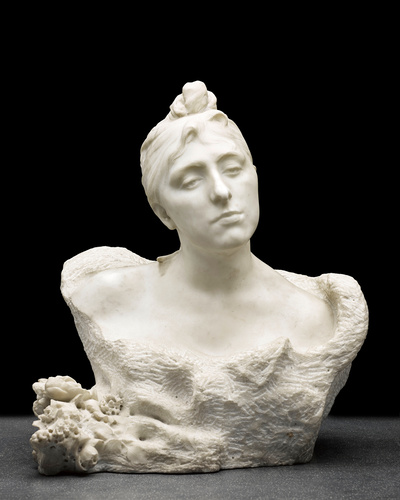La Douleur
Jean Escoula worked as an assistant carver for two of the greatest sculptors of the 19th century, Jean-Baptiste Carpeaux and Auguste Rodin, while following his own career at the same time.
The head, entitled Sorrow is taken from his group The Death of Procris, a plaster version of which was presented at the Salon de la Société des artistes français in 1890. The subject was inspired by an episode from Greek mythology: Procris was married to Cephalus. Her jealousy led her to hide in the bushes to spy on her husband while he was hunting. Seeing a branch move, Cephalus thought it was a wild animal, and killed his beloved with his javelin. Escoula here isolates Cephalus' head, wracked with despair after his terrible mistake.
The sculptor was following an academic exercise: that of the "tête d'expression". Every student at the Ecole des Beaux-Arts in Paris then learned to "express passions" in their work. There was even a competition set up in 1760 by the Count of Caylus, and students would actively prepare for it. This Sorrow refers back to the Head of Medusa by Canova (1757-1822) as well as to some contemporary group sculptures: the oldest child in the Carpeaux's Ugolin and the young Pierre de Wissant in The Burghers of Calais by Rodin (1885-1886).
In 1898, Sorrow was produced in bronze by the foundry Siot-Decauville. However, the model in the Musée d'Orsay is not part of an edition. This plaster has been moulded, as traces of the moulder's palette knife reveal, then reworked with fresh plaster. Even the fingerprints can be seen on it. It was therefore an intermediate stage in the creative process, a valuable insight into the work of the artist.
